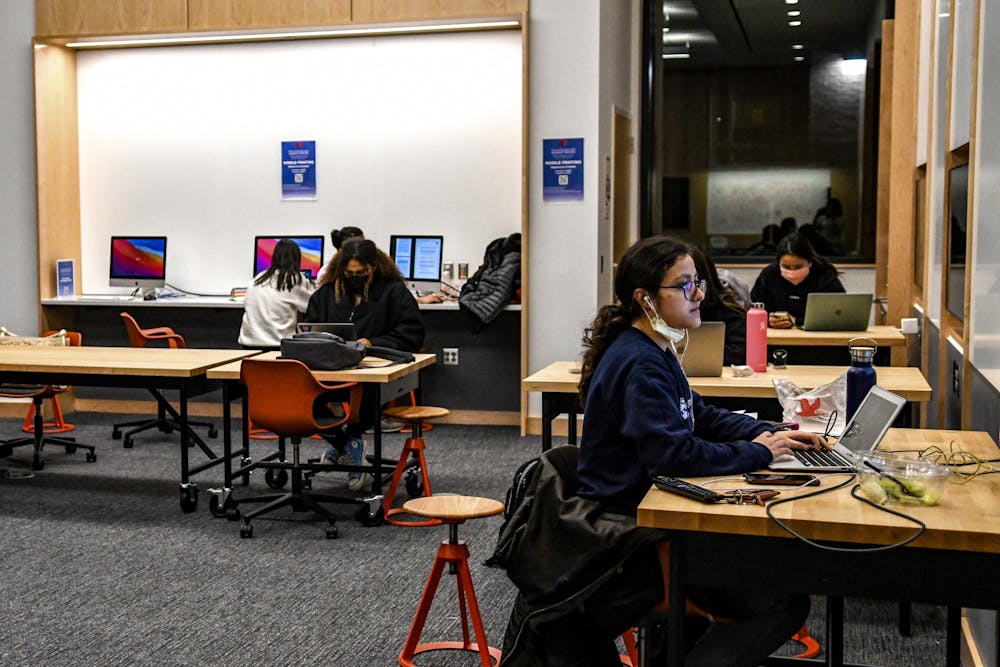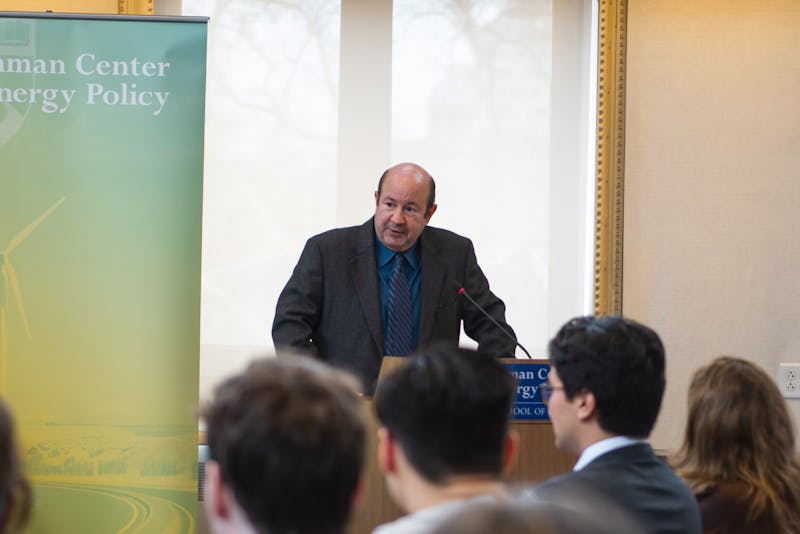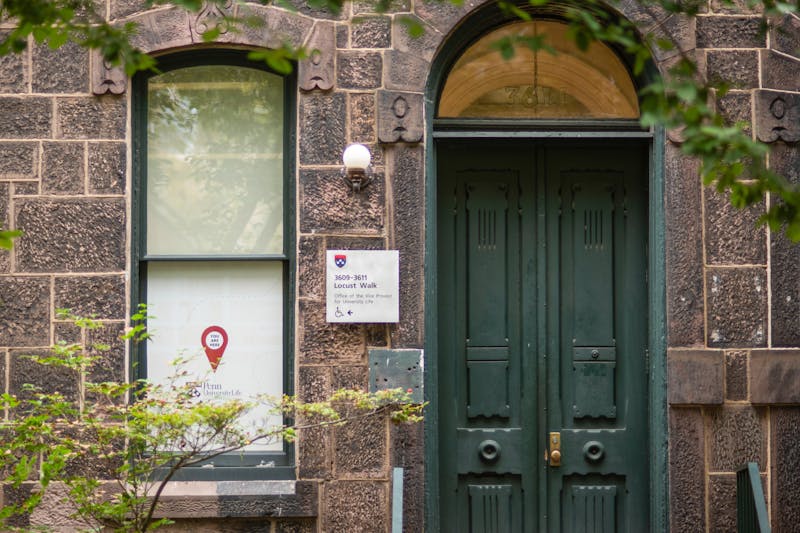
Two attendees at an event with 200 Insomnia Cookies. My suitemate and I sat in the club lounge, constructing model solar systems from styrofoam spheres and an assortment of paints. We were celebrating the Spring Equinox through an event organized at New College House West, but you wouldn’t know it from the poor showing.
Since NCHW first opened its doors to Penn students last fall, I’ve noticed that my suitemates and I are among the community’s most involved students. Three of us are on the Design Collective, and two of us are office managers. For several events, we have been the only students in attendance. We quip that we aren’t merely part of the house community, but that we actually are the house community ourselves. Our house motto is “opportunity is invented together,” but to me, it rings hollow — where is everybody that I’m supposed to be inventing opportunities with?
This academic year was the first that Penn required both first years and sophomores to live in on-campus housing and purchase dining plans. In an email announcing the decision in 2018, former Penn President Amy Gutmann and Interim Penn President Wendell Pritchett wrote that the housing requirement “will measurably strengthen the sense of community among our first- and second-year students.”
Like many other students, my knee-jerk reaction was to call this a "blatant cash grab." Even so, I remained optimistic because I knew what a strong house community felt like, and longed to experience it again as a sophomore. Spring 2021, amid the COVID-19 pandemic, was a time that was antithetical to community, but it was also when I set foot on Penn’s campus for the first time. At Kings Court English College House, better known as KCECH, every staff member went the extra mile. My RA organized free food drop-offs and game nights weekly, creating memories and fostering communication that eventually blossomed into friendship. Even though we were sparsely housed in doubles-turned-singles, my floormates (Now suitemates!) and I spent the majority of our days together, eating take-out from Hill in the courtyard and cramming homework assignments in dimly lit hallways.
I didn’t expect the exact same from NCHW. I understood that as sophomores, many students would have settled down with friend groups like I had. With COVID-19 restrictions letting up, there would also be many opportunities to meet people outside of housing. And admittedly, I am no social butterfly. It is nonetheless bizarre that not one new friendship I’ve made this year has emerged out of NCHW.
My first instinct is to blame the house administrators. I’m angry that my suitemate is often asked to organize her events at inopportune times: Why did anyone think that 9 a.m. on a Sunday is the primetime for college student socialization? I’m angry that when I scroll through my email, I see butchered attempts at a newsletter, where links to events are broken and posters are incorrectly formatted. But to a large extent, I dismiss these mistakes as growing pains with quick and easy solutions. Though this kind of incompetence is annoying, it wouldn’t dissuade me from attending an event I was genuinely interested in.
Further, increased event attendance wouldn’t necessarily fix NCHW’s community problem. What happens at the event also matters. The best attended events I’ve seen are often grab-and-go food events, with little incentive to get students to stay behind and socialize. Once an email is sent out, students often leave the event as quickly as they enter it.
The bigger problem at NCHW, I suspect, is that the convenience of its infrastructure dissuades socialization. Not only in KCECH, but in most first-year dorms, the best living spaces are publicly accessible to all, and are rather small. At NCHW, my suitemates and I still share meals and cram assignments together, but we do so in our common room behind our front door’s lock. NCHW is a hallmark of convenience: On my floor alone, there is a group study room, a community kitchen, and a lounge, in addition to common rooms for every suite. But convenience leads to complacency. Our suite’s common room is convenient, but it hardly exemplifies community. We mingle behind a gigantic glass window, visible to everyone, but approached by no one.
In large part, I have reaped the benefits of NCHW. I’ve enjoyed a spacious room (sans pests!) with gorgeous natural lighting. I’ve had access to crème de la crème dining at Quaker Kitchen, and spent an embarrassing amount of time studying in NCHW’s GSRs. But I also miss munching on smushed Beiler’s donuts in KCECH 443. I miss watching “Heathers: The Musical,” laying down on the hallway floor with a mish-mash of blankets and plushies alongside my suitemates. I even miss that time we banded together at 2 a.m. to kill a roach on the loose and celebrated with Wawa milkshakes afterwards. My life at KCECH was decidedly grittier and more inconvenient at times, but it was also spontaneous and busy. It was community-building.
NCHW will never be KCECH, and I don’t expect it to be. In many ways, this apartment-style of living is better for the busy Penn student — a more mature housing option compared to cramped first-year dorms. But it is hardly conducive to community-building, as Penn’s description of the Second-Year Experience would have us believe. As Penn continues to expand and as NCHW continues to grow into its house culture, I ask all of Penn’s community, especially first years incoming to NCHW, to consider what they want to be building. Take your greatest memories of community with you into next term, and consider how you can redesign your surroundings to recreate them.
CAROLINE MAGDOLEN is a College and Engineering sophomore studying environmental science and systems engineering from New York City. Her email address is magdolen@sas.upenn.edu.
The Daily Pennsylvanian is an independent, student-run newspaper. Please consider making a donation to support the coverage that shapes the University. Your generosity ensures a future of strong journalism at Penn.
Donate






